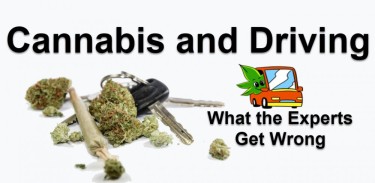
American roads are safer than ever after legalization
It seems that the legalization of cannabis has made America’s streets safer for everyone. A new study recently indicated that truck driving in legalized states is safer than ever.
The study observed trends in legalized states and found that the positive aspects of legalization far outweigh the negative. The adult cannabis market, which many assumed would be the cause of accidents, has done the opposite. US state and federal highways have fewer traffic accidents and risks. This new study specifically examines the link between recreational cannabis legalization and trucking in lawful states.
Marijuana Legalization and Truck Safety
Researchers from the University of Arkansas, in collaboration with Iowa State University, conducted this study to examine whether or not cannabis legislation had an adverse impact on the multi-billion dollar trucking industry in the United States. The research referred to as ” Does Pineapple Express damage more pineapples?” analyzed statistical data from 2005 to 2019.
Researchers attempted to understand the effects of cannabis use on heavy-duty truck drivers using a government panel of heavy-duty truck accident data and a difference-indifference estimation technique. At the end of the study, the researchers concluded that the average heavy-duty truck accident rate had not increased since the legalization of cannabis in the various states considered.
Instead, the results showed that legalization primarily gave drivers a sense of responsibility, as accidents involving heavy trucks were reduced by over 10% in the states studied. The researchers highlighted that six out of eight states saw a decline, while the remaining two rose slightly from their average rate. The states with the fewest heavy-duty truck accidents since legislation was passed in 2018 and 2013, respectively, are Vermont and Washington.
Vermont saw a significant decrease in accidents of -21.5% while Washington saw -20.1%. Massachusetts and Colorado followed, down -18% and -18.3%, respectively. The last two are Oregon and California, down -3.8% and -3.1% respectively. The two states that showed the expected increases out of the eight states surveyed are Maine and Nevada with 4.20% and 25.7%.
At this point we must emphasize that the above information is only a preprint and is subject to further peer review. Once the study has passed the peer review phase, it will be published.
Why the cuts?
The researchers explained that they are yet to find a key reason for the significant reduction in heavy truck accidents. However, they put forward some hypotheses as to why this is so.
They pointed out that since marijuana is typically enjoyed at home and not in a bar or restaurant, truck drivers are unlikely to be able to obtain or use marijuana while working fast.
It’s also possible that ex-drinkers have switched to marijuana, although it’s still illegal to drive while high; Research shows that this is much less likely to result in a fatal accident than driving while intoxicated. Of course, it is safest to drive a motor vehicle completely sober.
The legalization of marijuana has also led to many developments for the transportation business. The Federal Motor Carrier Safety Administration introduced its drug and alcohol registry in January 2020. Although a return to duty procedure is in place, it lists all commercial drivers who have failed a substance abuse test.
The Clearinghouse’s main objective is to promote truck safety on the road by ensuring that truck drivers who break drug and alcohol laws cannot simply switch to a different driving position without changing their previous behaviour.
Although it is still unclear to what extent these targets have improved road safety for truck drivers and other drivers, they have led to the exclusion of certain drivers. A total of 124,000 drivers were fired from their job as forklift drivers between January 2020 and April 2022 for failing drug tests, and 31,000 have completed the return process to get back on the road.
However, most violations involve medical marijuana rather than narcotics such as opiates, amphetamines, methamphetamines, or cocaine. As of January 2020, more than 74,000 truck drivers who have tested positive for marijuana have been banned from operating commercial trucks.
other details
Comparing Nevada to Vermont, which experienced the largest decline of any state, allows the researchers to take a deeper look at the rise in accidents in Nevada.
They discovered that Nevada has more travelers unfamiliar with the state’s roads than Vermont, which has significantly less tourism. In Nevada, visitors are also more likely to use marijuana outside of the home, such as when in Las Vegas, suggesting they are more likely to drive after using marijuana. On the other hand, Vermont has a denser population than Nevada but shorter road distances. As a result, drivers tend to drive more carefully when they have a clear head.
Additionally, some of the findings in this report are more or less in contrast to other recent studies on the relationship between cannabis legalization and vehicle accidents in legal states. For example, in 2021, researchers at Boston University found that accidents involving heavy trucks and vehicles due to substance use have not decreased over the past decade. The Boston study found that cannabis-related accidents more or less doubled.
Some other studies suggested that marijuana legislation could become the leading cause of traffic accidents in the years to come. However, this does not mean that the effects would be deadly.
bottom line
In the meantime, it’s wise to drive sober and abide by the rules and regulations of your state’s cannabis legislation.
Note that this study does not promote cannabis use while driving or just before driving. Researchers say cannabis can affect a person’s ability to drive for up to four hours after consumption. So before you get behind the wheel after using cannabis, make sure the effects have worn off. Before moving your truck, take stock of how sharp your senses are. Overall, you have to think about your safety and that of other road users.
CANNABIS AND DRIVING, READ MORE..

WHAT THE EXPERTS GET WRONG ABOUT DRIVING AND CANNABIS!
OR..

WHAT SHOULD YOU DO IF YOU RIDE UP AND PASS?

Post a comment: